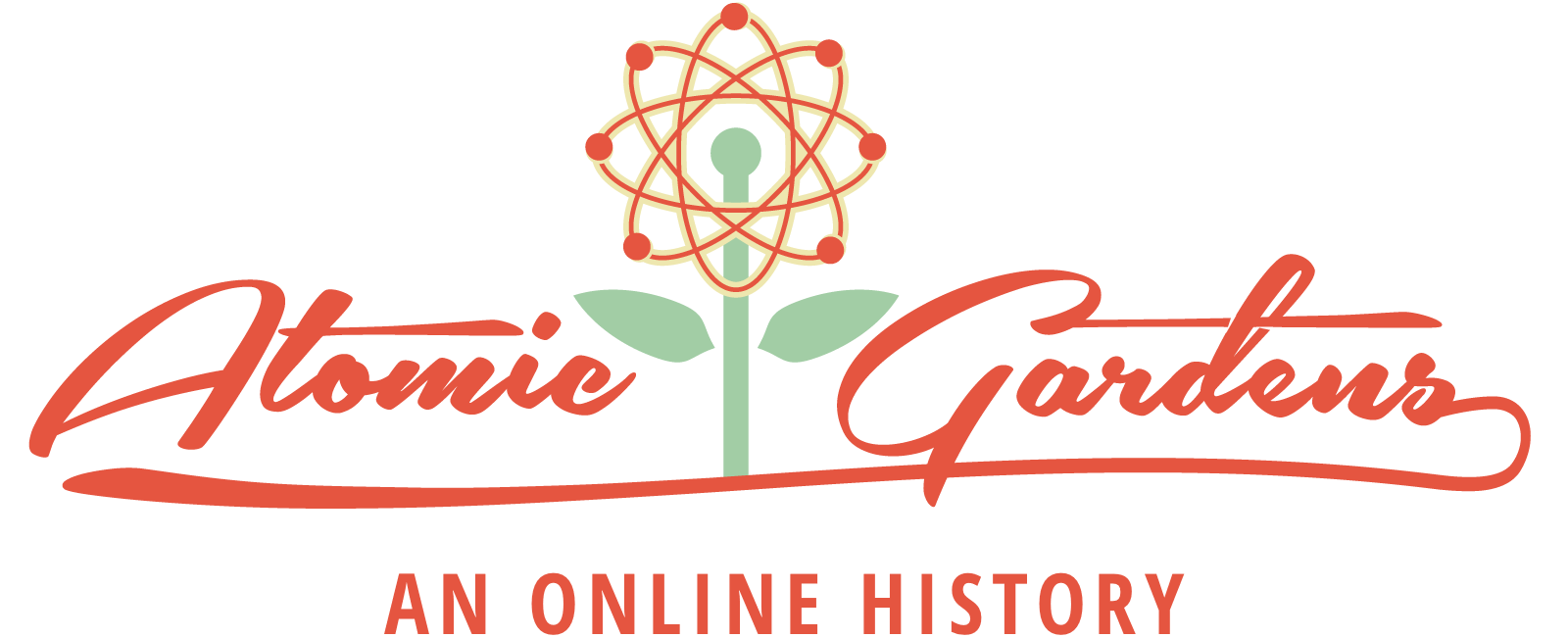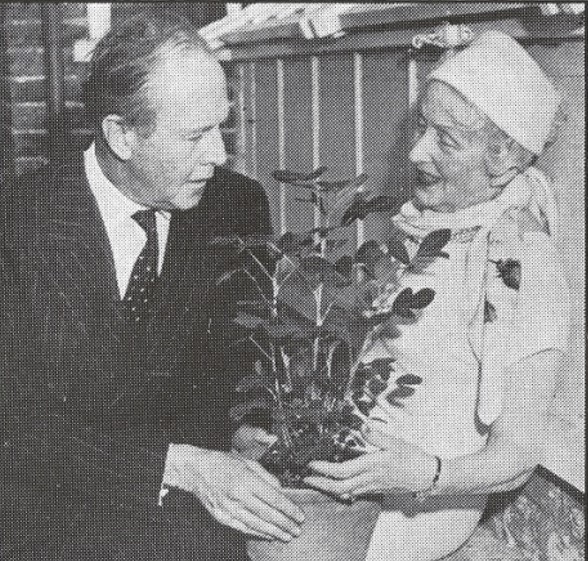The Atomic Gardening Society
“I now felt that by some stroke of luck which is difficult to ascribe to chance, I had been given the opportunity—so much longed for—to bring science right into the homes of the people. I organized an ATOMIC GARDENING SOCIETY to co-ordinate and safeguard the interests of ATOMIC MUTATION EXPERIMENTERS who would work as one body to help scientists produce more food more quickly for more people, and progress horticultural mutation.” –Atomic Gardening for the Layman, 1960
Sadly, Muriel’s dinner guests did not ‘seem to appreciate that the nut was . . . the outcome of an immense achievement’. Disappointed after her party, she decided to “pop an irradiated peanut in the sandy loam to see how this mutant grew”.
The ‘Muriel Howorth’ peanut (she quickly named it after herself) germinated in four days and was soon two feet high. She called the newspapers.
Within days there were interviews and television appearances, AP reporters in the driveway and sightseers peering into the glasshouse to get a look at the plant. Its portrait was commissioned and put on display at the Walker Galleries in London. 66 Beverley Nichols, England’s ‘beloved gardener’ and prolific garden writer, came to call:
“Yesterday I held in my hands the most sensational plant in Britain.
It is the only one of its kind. Nothing of its sort has ever been seen in the country before. To me it had all the romance of something from outer space.
It is the first ‘atomic’ peanut.
It is a lush, green plant and gives you a strange, almost alarming sense of thrusting power and lusty health.
It holds a glittering promise in its green leaves, the promise of victory over famine.”Muriel and Beverley Nichols
Muriel inaugurated a new atomic society (the Atomic Gardening Society, or AGS), self-published a book (Atomic Gardening), and sought to draw influential names within the horticultural world to her cause. Anyone who joined the society was offered six free irradiated peanuts, enabling them to try for the ‘Muriel Howorth Peanut Prize’, first prize a silver bowl, inscribed.
In an early example of scientific crowdsourcing, Muriel seized upon the power of the people to come to the aid of science: “I knew that there were, in this country, too few plant geneticists and too few laboratories. I deduced that a few thousand assistants…would greatly assist the scientists to speed up this humanitarian and scientific work.”
A plant grown from irradiated seed might change colour, be dwarfed, produce more or less fruit, remain unchanged (at least visibly) or fail to germinate at all. The nearly infinite possibilities meant that a large group of plants needed to be examined, and compared to comparable data from both fellow irradiated seeds and non-irradiated controls. Gardeners were enlisted as AGS ‘mutation experimenters’ and assigned blue badges. They were to keep strict data cards documenting the progress of their plants, and return them to the society.
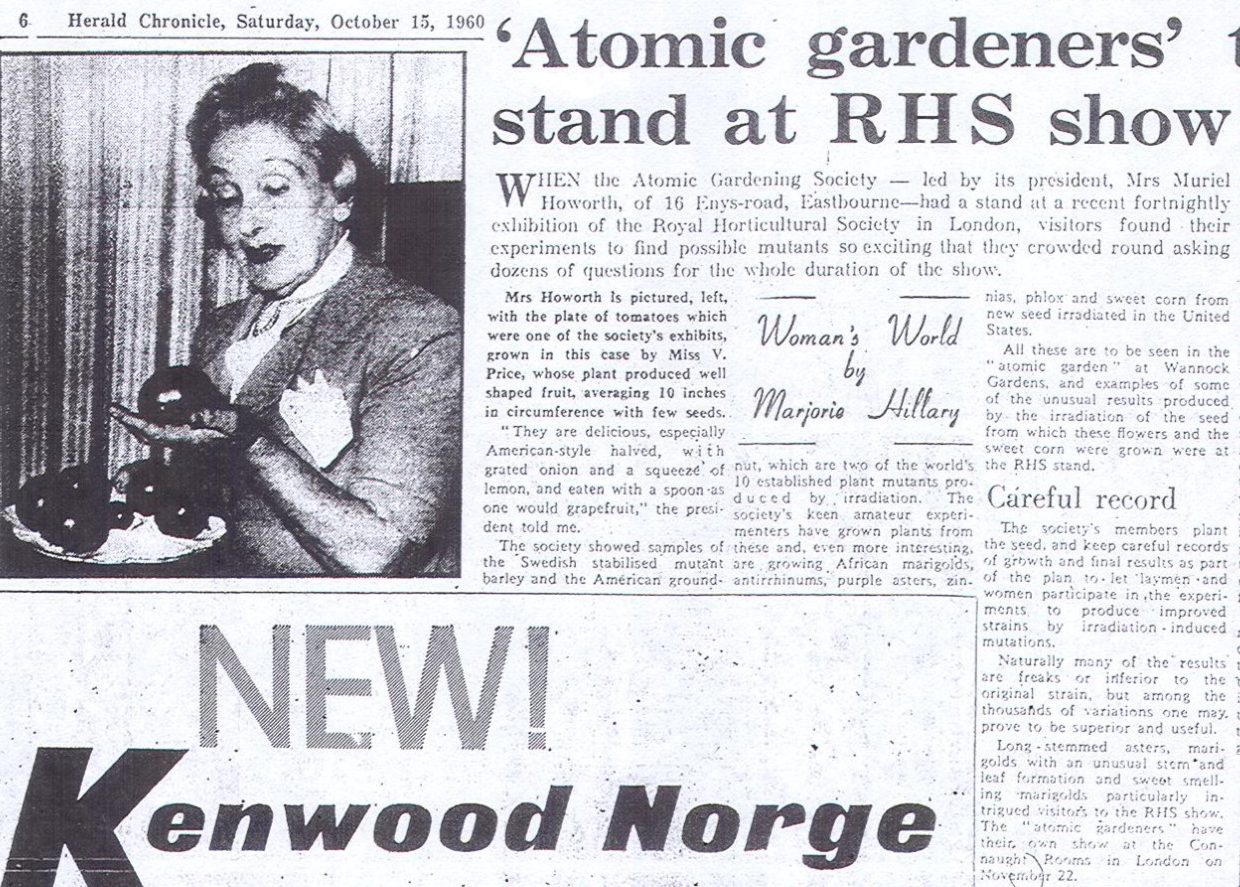
Mrs. Muriel Howorth at the Royal Horticultural Society in London.
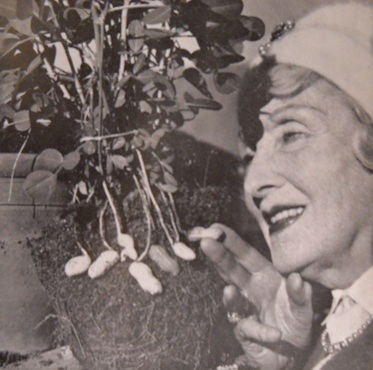
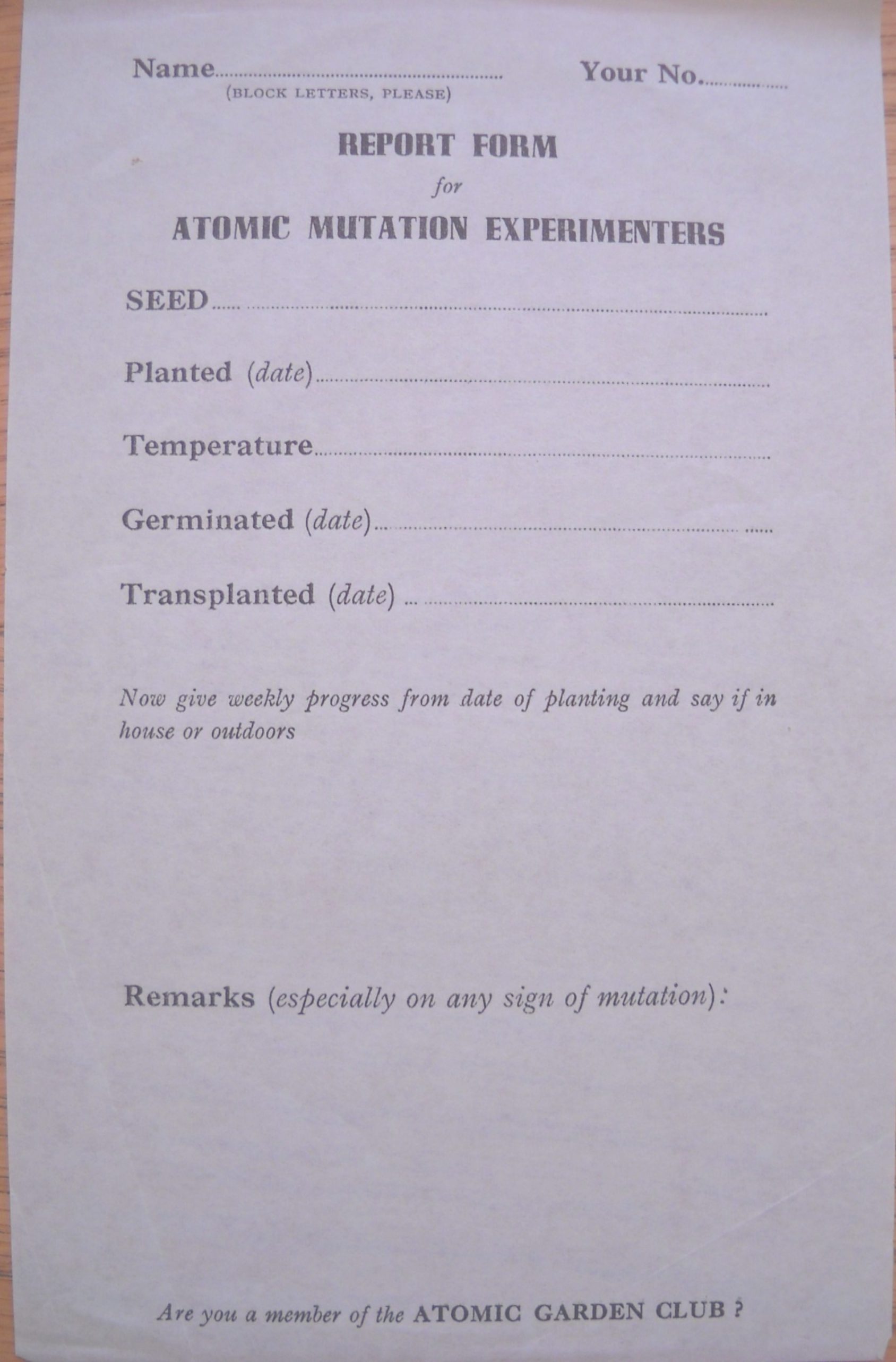
An original report form on which the atomic gardeners were to record their results. Though Muriel referred to progress data cards coming in ‘from as far as Greece and Australia and . . . Switzerland, France, Germany and Holland’ none of these have been found and the legacy of these plant trials remains unknown.
The Scientific Advisory Board of the AGS, assigned a gold badge to wear at meetings, was charged with ‘assessing meritorious work, comparing useful results with those in America, and determining the value of the various growth developments in order to award certificates and prizes for merits’, to be awarded in annual Atomic Plant Mutation Symposia held at the Royal Horticultural Society Hall. A list of the experimental gardens ‘where atomic plants can be seen’ included the Royal Horticultural Society’s Garden at Wisley; the Royal Botanic Gardens, Kew; Alexandra Park, Hastings; Buxted Park gardens, Sussex; Cannell’s Gardens, Norfolk; Chase (Cloche House) Gardens, Chertsey and Shepperton; Wannock Gardens, Eastbourne; and the Grange, Chertsey.
Muriel soon made a wider variety of seeds available to her members by becoming the exclusive importer for C.J. Speas’ atom-blasted seeds in the United Kingdom. According to a local report in Oak Ridge, by October 1960 C.J. Speas’s firm had shipped 3,500,000 seeds to England. She claimed a “thousand mutation experimenters”, including “retired or non-government employed geneticists, science masters, plant breeders and pure amateurs”.
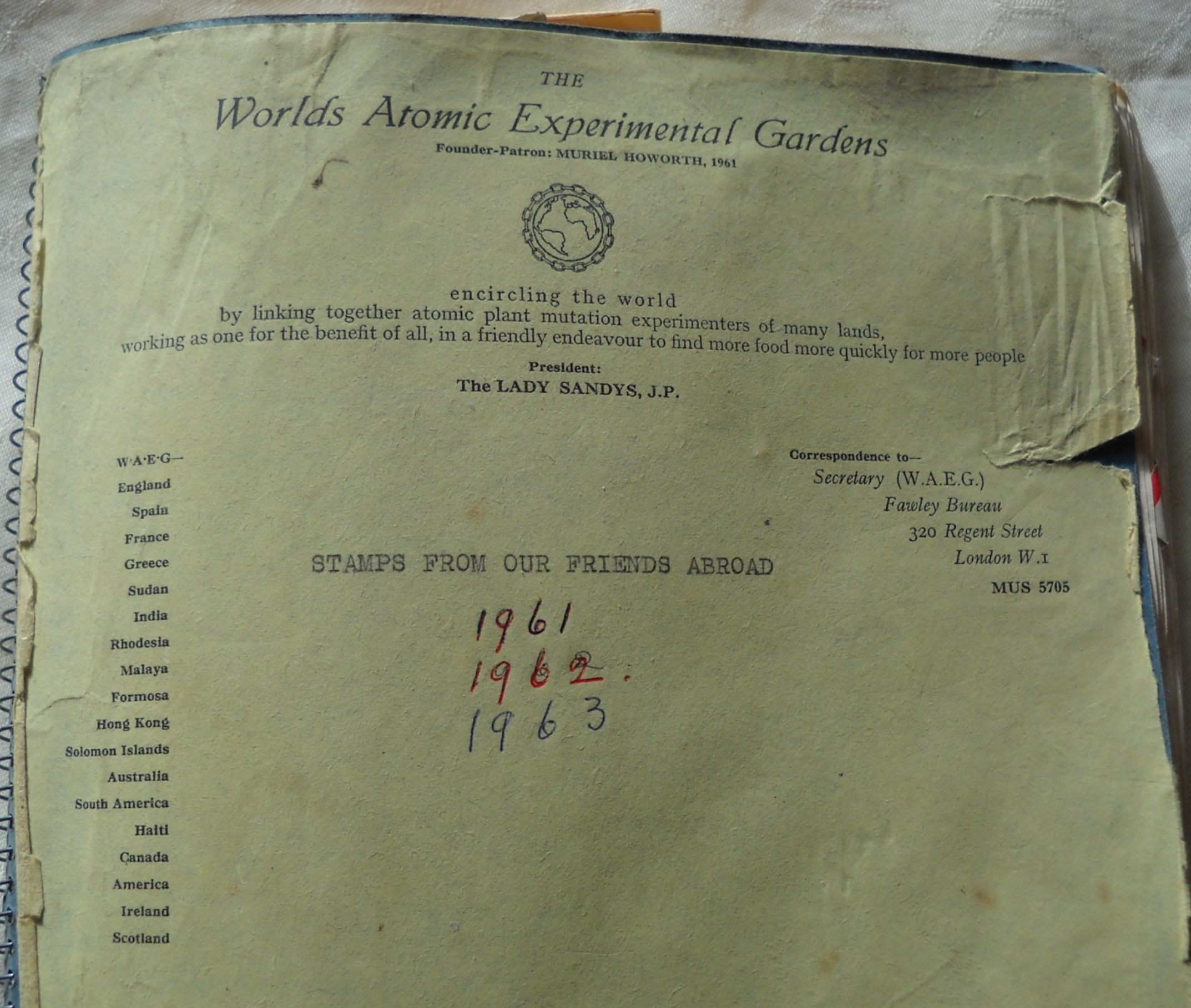
Muriel’s list of all the atomic gardeners.
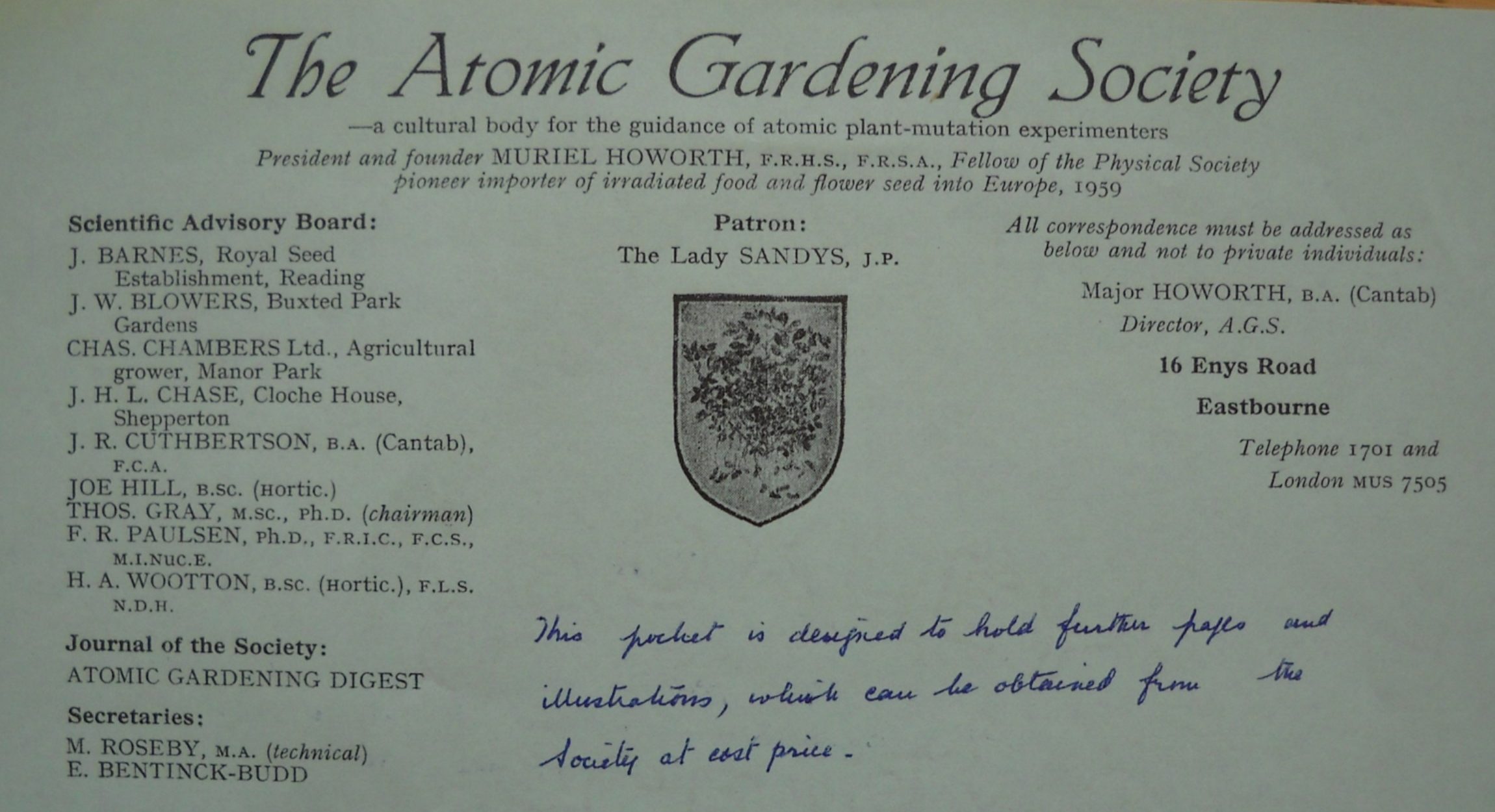
The Atomic Garden Society’s official letterhead.




